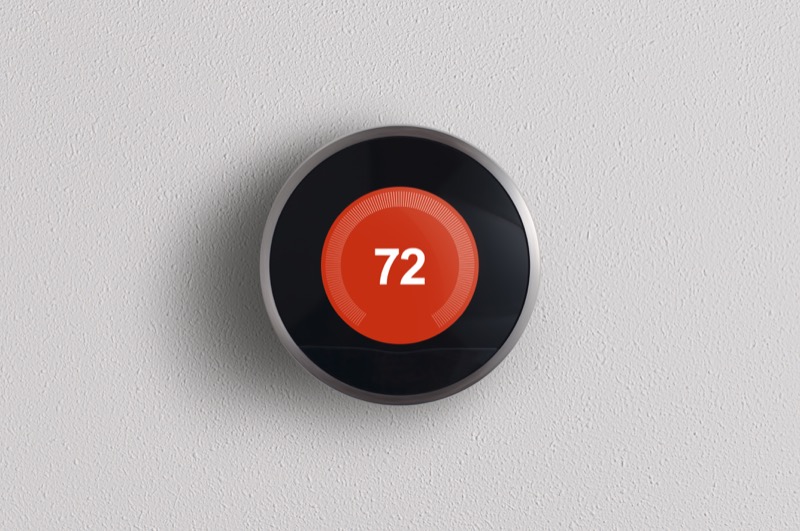
What Is a Smart Home?
You’ve just landed in your home city, and as you walk down the aisle and step off the plane you can feel it: hot, humid air fills the jet bridge and hits you like a wall. In 2009, you’d probably been excited to just get into an air conditioned car before you arrive home to the sweltering heat, but in 2019, you can keep your cool. With a few swipes and tap, you take your home thermostat temperature from a warm 86 degrees to a more tolerable 72 — all before you get off the jet bridge.
At one point, it felt as if this technology would only exist in some far off future, but today it’s transforming houses into smart homes that can automate and optimize everyday tasks. From fridges to front doors, and bedrooms to blinds, the home is no longer simply a place in which we live, but a place with which we interact that molds to our behavior and aims to make our lives seamless.
What is a smart home?
A smart home is a residence in which internet-connected devices, appliances and utilities share data and communicate with each other to enable better energy efficiency, security protection and peace of mind.
Recent market research suggests that 43% of broadband-enabled homes plan to purchase a smart device this year, and 25% expect a “move-in ready house” to have smart home tech included.
Smart technology is transforming every part of the home, and the ultimate promise of this technology is that it will be able to adapt to different lifestyles and usage habits, automatically making adjustments that save money, time and energy. Imagine an automated home that’s perfectly customized to your needs, but doesn’t require you to program it — that’s the smart home of the future.
Examples of smart home tech
Smart entertainment
Just 10 years ago (or last week, depending on whom you ask) home entertainment systems required different remotes for each component. One for your TV, another for your amplifier, and one for your cable box. But a smart home entertainment system lets you control all of this from one screen, much like a universal remote. Most smart entertainment systems come with an app you can download that allows you to do things like adjust the volume of your music or change the TV channel from a user-friendly touchscreen interface or via voice-activated controls (for example, “Alexa, change the channel to ‘This is Us’”).
Smart utility and energy systems
Smart home technology can also automate utilities like heat, A/C, lighting and electrical outlets to save energy.
The Nest Learning Thermostat, for example, automatically adjusts the temperature of different rooms in your home based on your preferences and usage patterns. The more you use the system, the more it learns about what temperatures you prefer, what times you’re likely to be home, and when you’re sleeping — all information that can be used to run a more energy-efficient heating and cooling system.
Smart lights made by companies like Philips and LIFX can turn themselves off when you leave the house. Smart plugs, which you plug into normal wall outlets, can make any device a smart device. Worried you left the hair curler on? Turn off the outlet from your phone, no matter where you are. You can even water your lawn from the office if you want to.
Smart security systems
Smart security systems can help protect your home and family. Internet-connected cameras allow you to check in on your home even if you’re hundreds of miles away, and they’ll even alert you if they sense unexpected activity (like, say, a neighbor’s dog who happens to “appreciate” your lush, green lawn).
Smart locks allow you to lock your front door with the touch of a button — even if you only remembered to do it hours after you left home. There are even “mockupancy” smart devices that make it easy for you to simulate your home being occupied when it’s not. Think of it as a more sophisticated version of the one-man party Kevin McCallister throws in “Home Alone” to dissuade the burglars lurking outside.
Smart home hubs
Think of a smart home hub as the air traffic control tower for all your smart home technology. If you have smart blinds, locks, sensors and a refrigerator, you want to be able to control them all with one central app on your smartphone. The smart home hub serves as the messenger, taking a command from your phone and routing it to the correct device.
Communication also goes the other way. When a smart sensor determines that a window has been left open, it sends that data to your home hub, which alerts you on your smartphone. The home hub can also take that data and use it intelligently to send commands to other devices, even from different manufacturers. If the window has been left open, the A/C should be turned off or set to a higher temperature to increase efficiency. Examples of smart home hubs include the Google Home Hub, Apple HomePod and Amazon’s Echo Show.
The benefits of a smart home
The smart home takes home automation one step further — not only can appliances and utilities control themselves, but they can also gather and share information, think, make decisions, and adjust their own settings without human intervention. With just a smartphone, you can control every feature of your home, or you can leave it up to your home hub to figure out how to do this for you based on your preferences and living habits. Smart homes can help you save time, money, energy, and worry with intelligent automation.
Smart technology is taking home automation into the future, where there are growing to-do lists, and new social and emotional demands in an internet-connected world. While turning on the lights, lowering the shades, locking the door and pre-heating the oven when you arrive home may not seem like a lot, it makes all the difference if you’ve had a tough day at work and just want to sink into the couch.
Product features may have changed and are subject to change.




Join the conversation